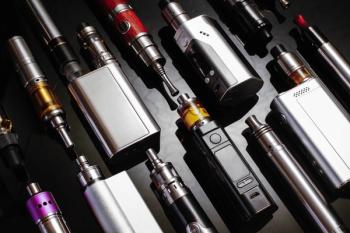
Explore the evolution of atomic spectroscopy and its impact on science writing, highlighting key publications and industry advancements over the decades.

Explore the evolution of atomic spectroscopy and its impact on science writing, highlighting key publications and industry advancements over the decades.

This month’s column investigates the elemental composition of electrolytes in lithium-ion batteries (LIBs) using inductively coupled plasma–mass spectrometry (ICP-MS).

In recent years, advances in X-ray optics and detectors have enabled the commercialization of laboratory μXRF spectrometers with spot sizes of ~3 to 30 μm that are suitable for routine imaging of element localization, which was previously only available with scanning electron microscopy (SEM-EDS). This new technique opens a variety of new μXRF applications in the food and agricultural sciences, which have the potential to provide researchers with valuable data that can enhance food safety, improve product consistency, and refine our understanding of the mechanisms of elemental uptake and homeostasis in agricultural crops. This month’s column takes a more detailed look at some of those application areas.

This month’s column evaluates the capability of inductively coupled plasma–mass spectrometry (ICP-MS) to reduce the impact of doubly charged rare-earth element (REE) interferences on the quantitation of the metalloids, arsenic (As), and selenium (Se) in water and biological matrices.

In this article, we introduce the concept of a gas exchange device (GED) and how it can be used to monitor organometallic compounds and metallic particles in specialty gases.

This article explores the current landscape of global critical raw materials (CRM) trends in research and the applications of atomic spectroscopy (AS), including inductively coupled plasma–mass spectrometry (ICP-MS), inductively coupled plasma–optical emission spectrometry (ICP-OES), and X-ray analytical techniques in their identification of diverse industrial and environmental media.

This article explores the current landscape of global critical raw materials (CRM) trends in research and the applications of atomic spectroscopy (AS), including inductively coupled plasma–mass spectrometry (ICP–MS), inductively coupled plasma–optical emission spectrometry (ICP–OES), and X-ray analytical techniques in their identification of diverse industrial and environmental media.

In this review article, the editors of Spectroscopy break down the most recent research and trends using inductively coupled plasma mass spectrometry (ICP-MS).

A new sample introduction method improves ICP-OES for ultratrace element analysis. An explanation of how this ICP-OES compares to ICP-MS analysis is also provided.

Minimizing sample preparation issues requires users to consider method LODs as well as high purity polymer materials for sample collection and preparation. Here, we examine proper personal analytical practices one can take to avoid environmental contamination.

Good sample handling practices that minimize sample contamination during preparation of inorganic analyses are discussed, using glass and low purity quartz as examples.

The use of ICP-MS is constantly expanding into an ever-wider variety of applications. We assess the current landscape and where the technique is going in the future.

Is ICP-MS instrumentation ready to handle the requirements of AOAC Method 2015.01 for the determination of toxic elements in food—including dealing with interferences? We ran this study to check.

Understanding the proper ways to plan, run, and report proficiency tests will help you avoid errors and contamination.

Proficiency testing (PT) can assess the performance of individuals or laboratories, but it’s important to understand how to do it properly.

Laser ablation laser ionization time-of-flight mass spectrometry (LALI-TOF-MS) can quantify elemental constituents without the need for matrix-matching, making it attractive for metals testing, particularly for additive manufacturing.

How can you assess real-world detection capability of an ICP-MS system?

The way the analytical signal is managed in ICP-MS has a direct impact on the results generated. In this first of a two-part series, we explain the fundamental principles of a scanning quadrupole and how measurement protocols can be optimized based on data quality objectives.

A recent investigation found dangerous levels of heavy metals in commercial baby foods. Tighter scrutiny and regulations are needed.

EPA Method 200.8 and the Lead and Copper Rule Revisions don’t allow use of modern ICP-MS technology with a collision cell. Instead, correction equations can be used to compensate for polyatomic interferences.

Analysis of heavy metals in pet food using ICP–OES was conducted to determine if there were potentially toxic elements present. Many of the samples showed significant concentrations of various toxic metals.

This method detects elements intrinsically present in cells, and because sc-ICP-TOF-MS measures a full mass spectrum, no analytes are missed.

For a number of elements, spectroscopic interferences can have a significant impact on the ability to achieve low detection limits in ICP-MS. We investigate the mechanisms in multi-quadrupole ICP-MS that are designed to remove these interferences.

Recent advances in laser ablation laser ionization TOF mass spectrometry (LALI-TOF-MS) are allowing laboratories to reach required limits of quantitation for trace impurities in solid materials by direct analysis, while avoiding common limitations of other techniques.

By placing a liquid particle counter in-line with an ICP-OES system it is possible to analyze wear metals and particles in lubricant samples in one run. This approach streamlines the monitoring of in-service lubricants and meets the ASTM D5185 standard. Such analyses are critical for heavy machinery maintenance.

A laminar flow box for sampling is combined with a positive voltage on the skimmer cone to reduce detection limits to pg/L concentrations in ICP-MS. These improvements reduce the risk of contamination and increase the efficiency of ion sampling and focusing.

A detailed look at the most critical component of an ICP-MS instrument: the interface cones

Complex isobaric and polyatomic spectral interferences can be mitigated using triple quadrupole ICP-MS (ICP-MS/MS) with a collision–reaction cell (CRC). This configuration allows for the multielement characterization and detection of smaller nanoparticle sizes.

Illegal artisanal gold mining using mercury amalgamation is poisoning people and the ecosystem in the Amazon rain forest. By taking the technique of direct mercury analysis to a remote, field-based laboratory, the team of Professor Luis Fernandez is measuring the extent of the contamination in a wide variety of samples, including soil, fish, air and human hair.

With analytical advances, the clinical practice threshold for lead has dropped from 60 to 5 μL/dL.